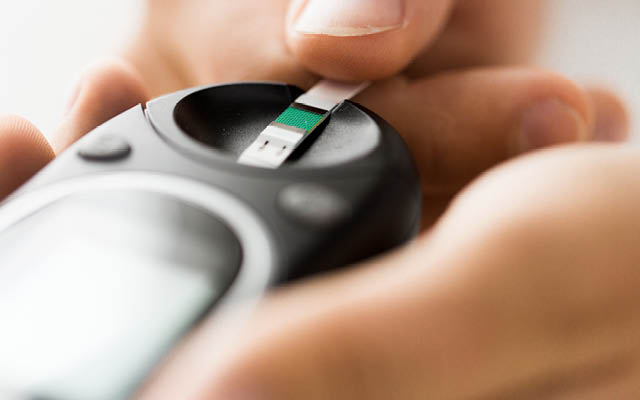Our Medical–Pharmaceutical Complex is notorious for overtreating the elderly, so I was a bit surprised the other day to discover a gaggle of credible mainstream healthcare experts arguing for a less-intensive approach to treating one of Geezerville’s most common maladies: diabetes. It’s anyone’s guess, however, how my aging peers will respond.
As Paula Span reports in the New York Times, about one in three seniors in the United States suffer from type 1 or type 2 diabetes, and the vast majority of them manage the disease with medication, typically striving to tamp down hemoglobin A1c (HbA1c) levels below the prescribed standard of 7 percent. But as these patients age and acquire multiple chronic illnesses, that approach can lower blood sugar too much, triggering bouts of hypoglycemia — leaving them nauseous, lightheaded, and prone to falls.
Several medical organizations in recent years have begun calling for a more moderate treatment protocol, but it wasn’t until the Endocrine Society issued new guidelines in May that the less-is-more strategy seemed to gain some traction among mainstream physicians.
“It’s important in shifting the thinking that lower is always better,” Yale School of Medicine endocrinologist Kasia Lipska, MD, told Span.
The guidelines recommend allowing blood sugar levels of up to 8.5 percent for older patients in poor health and up to 8 percent for those suffering from dementia and other chronic conditions. It’s not a one-size-fits-all prescription, noted Derek LeRoith, MD, PhD, who helped draft the guidelines, but it’s likely to apply to the majority of older adults coping with the disease.
“This is personalized medicine, taking each patient individually and deciding what’s appropriate,” he explained. “You can have a 75-year-old who is healthy and can deal with tight control, but that’s probably the minority.”
Span describes an 87-year-old woman who told her doctor that she’d been pushing her blood sugar below the recommended levels for a quarter century and wasn’t about to shift her approach. She only relented when her kidneys began to fail and the high doses of insulin brought on frequent episodes of hypoglycemia.
Severe Hypoglycemia Attributable to Intensive Glucose-Lowering Therapy For Adults With Diabetes
She may be one of the lucky ones. A Mayo Clinic report released last month found that 2.3 million American adults were overtreated for their diabetes between 2011 and 2014, resulting in 4,774 hospitalizations and 4,804 emergency room visits. And these numbers are probably “a large underestimation” of the problem, lead study author Rozalina McCoy, MD, noted.
McCoy’s team analyzed data on 10.7 million diabetics who maintained their HbA1c levels below the standard 7 percent range and found that more than one in five (22 percent) of these patients were undergoing intensive treatment — pushing those levels below 6.4 percent. Some were even maintaining levels below 5.6 percent.
About a third of those 10.7 million patients were considered “clinically complex”: older than 75; suffering from end-stage kidney disease; battling three or more chronic illnesses; and reporting significant limits on their daily activity, such as difficulty dressing or feeding themselves. They were nevertheless just as likely as their healthier counterparts to be undergoing intensive treatment to lower HbA1c levels.
“Older people and others we consider clinically complex are more at risk to develop hypoglycemia, as well as experience other adverse events because of intensive or overtreatment. However, at the same time, these patients are unlikely to benefit from intensive therapy rather than moderate glycemic control,” McCoy said in a statement. “When we develop a diabetes treatment plan, our goal should be to maximize benefit while reducing harm and burden of treatment.”
Personalized Approach
To shift this trend, McCoy noted, the healthcare system needs to become less “disease-focused” and begin to consider each patient as a unique individual. “We need to align treatment regimens and goals with each patient’s clinical situation, health status, psychosocial situation, and reality of everyday life to ensure that care is consistent with their goals, preferences and values.”
It’s a fine sentiment, certainly, but as Lipska noted in the Times, the healthcare industry has for years taught the elderly to cope with diabetes in a way that doesn’t necessarily invite compromise: “We’ve built a system where they feel good or bad about themselves based on a single number.”




This Post Has 0 Comments